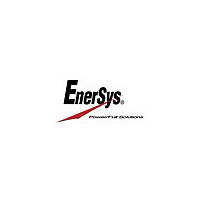NP4-12 EnerSys, NP4-12 Datasheet - Page 9

NP4-12
Manufacturer Part Number
NP4-12
Description
12V/4AH SEALED LEAD ACID BATT
Manufacturer
EnerSys
Series
NPr
Specifications of NP4-12
Voltage - Rated
12V
Capacity
4.0Ah
Size / Dimension
3.54" L x 2.76" W x 4.21" H (90mm x 70mm x 107mm)
Termination Style
Spade, .187" and .250" (4.7mm and 6.3mm)
Rechargeability
Yes
Brand/series
NP Series
Chemical System
Lead Acid
Dimensions
90mmL×70mmW×106mmH
Primary Type
Rechargeable
Resistance, Internal
40 Milliohms
Size
Rectangular
Temperature, Operating
-15 to +50 °C
Temperature, Operating, Maximum
+50 °C (Charge), +60 °C (Discharge)
Temperature, Operating, Minimum
-15 °C (Charge), -20 °C (Discharge)
Termination
0.187/0.25 Quick Disconnect Tab
Voltage, Nominal
12 V
Voltage, Rating
12 V
Weight
1.75 kg
Lead Free Status / RoHS Status
Contains lead / RoHS compliant by exemption
Other names
Q4855529
www.enersys.com
Figure 5.
■
The dotted line in Figures 3 & 4 indicates the lowest
recommended voltage under load, or cut-off voltage, at
various discharge rates. In general, lead acid batteries are
damaged in terms of capacity and service life if discharged
below the recommended cut-off voltages. It is generally
recognized that all lead calcium alloy grid batteries are subject
to over-discharge damage. For example, if a lead acid battery
were discharged to zero and left in either open or closed
circuit for a long period of time, severe sulfation and shorting
would occur, thus raising the internal resistance abnormally
high. In such an extreme case, the battery may not accept a
charge.
Genesis NP Series batteries however, have been designed to
withstand such occasional over discharge. While it is not
recommended, Genesis NP batteries can recover their full
capacity under normal charging conditions, even when they
have been subjected to extreme over discharge.
Final discharge voltage is as shown in Table 4.
Table 4.
When considering discharge currents exceeding 3C, consult
with an EnerSys Application Engineer.
■
The self-discharge rate of Genesis NP batteries is approxi-
mately 3% per month when the storage temperature is
maintained at 20
with storage temperature and the remaining capacity.
■
In general, when lead acid batteries of any type are stored in a
discharged condition for extended periods of time, lead
sulfate is formed on the negative plates of the batteries. This
phenomenon is referred to as “sulfation”. Since the lead
sulfate acts as an insulator, it has a direct detrimental effect
on charge acceptance. The more advanced the sulfation, the
Storage, Self-Discharge and Shelf Life
0.1 C or below, or Intermittent discharge
0.1 7C or current close to it
0.26C or current close to it
0.6C or current close to it
From 0.6C to 3C
Current in excess of 3C
Over-Discharge (Deep Discharge)
Self-Discharge
Shelf Life
Discharge Current
(%)
Self Discharge Characteristics
Final Discharge Voltage
0
C (68
0
F). The self-discharge rate will vary
STORAGE TIME (MONTHS)
Final Discharge (V/Cell)
20
0
C
1.75
1.70
1.67
1.60
1.50
1.30
lower the charge acceptance. “Brief storage”, ie., a few days,
at temperatures higher than the ranges recommended, will
have no adverse effect on storage time or service life.
However, if such use continues for more than one month, the
storage time must be determined according to the new
ambient temperature.
Table 5 below shows the normal storage time or shelf life at
various ambient temperatures.
Table 5.
Figure 6. Open Circuit Voltage vs. State of Charge
■
In general, to optimize performance and service life, it is
ecommended that Genesis NP batteries which are to be
stored for extended periods of time be given a supplementary
charge, commonly referred to as a “refresh charge”,
periodically. Please refer to the recommendations listed
under REFRESH CHARGING.
The internal resistance (impedance) of a battery is lowest
when the battery is in a fully charged state. The internal
resistance increases gradually during discharge, Figure 7
shows the internal resistance of an Genesis NP battery
measured through a 1,000 Hz AC bridge.
Figure 7. Internal Resistance of NP Battery
Impedance
INTERNAL
RESISTANCE
(mΩ)
Recharging Stored Batteries
41
31
21
0
0
0
C (106
0
0
C ( 88
C ( 32
C ( 70
TERMINAL
VOLTAGE
(V)
Shelf Life at Various Temperatures
0
0
0
F) to 40
F) to 50
0
Temperature
F) to 20
F) to 30
0
0
0
C (122
C (104
0
C ( 68
C ( 86
Publication No: US-NP-AM-002 • June 2006
DISCHARGE TIME (HOURS)
0
0
0
0
F)
F)
F)
F)
BATTERY: NP7-12
AMBIENT TEMPERATURE: 25
MEASURED WITH 1000Hz AC BRIDGE
12 months
2.5 months
Shelf Life
9 months
5 months
0
C (77
0
F)
9


















